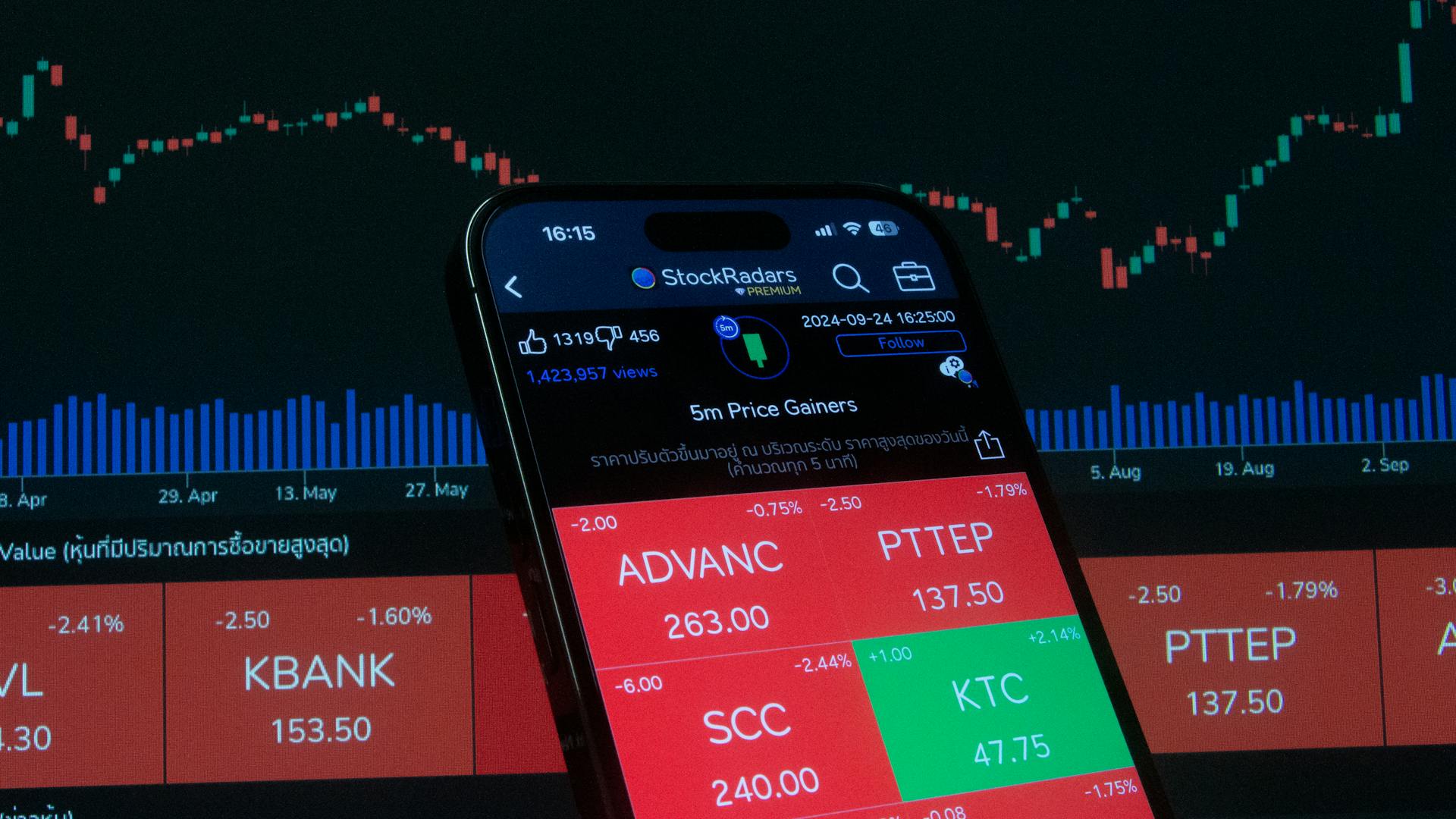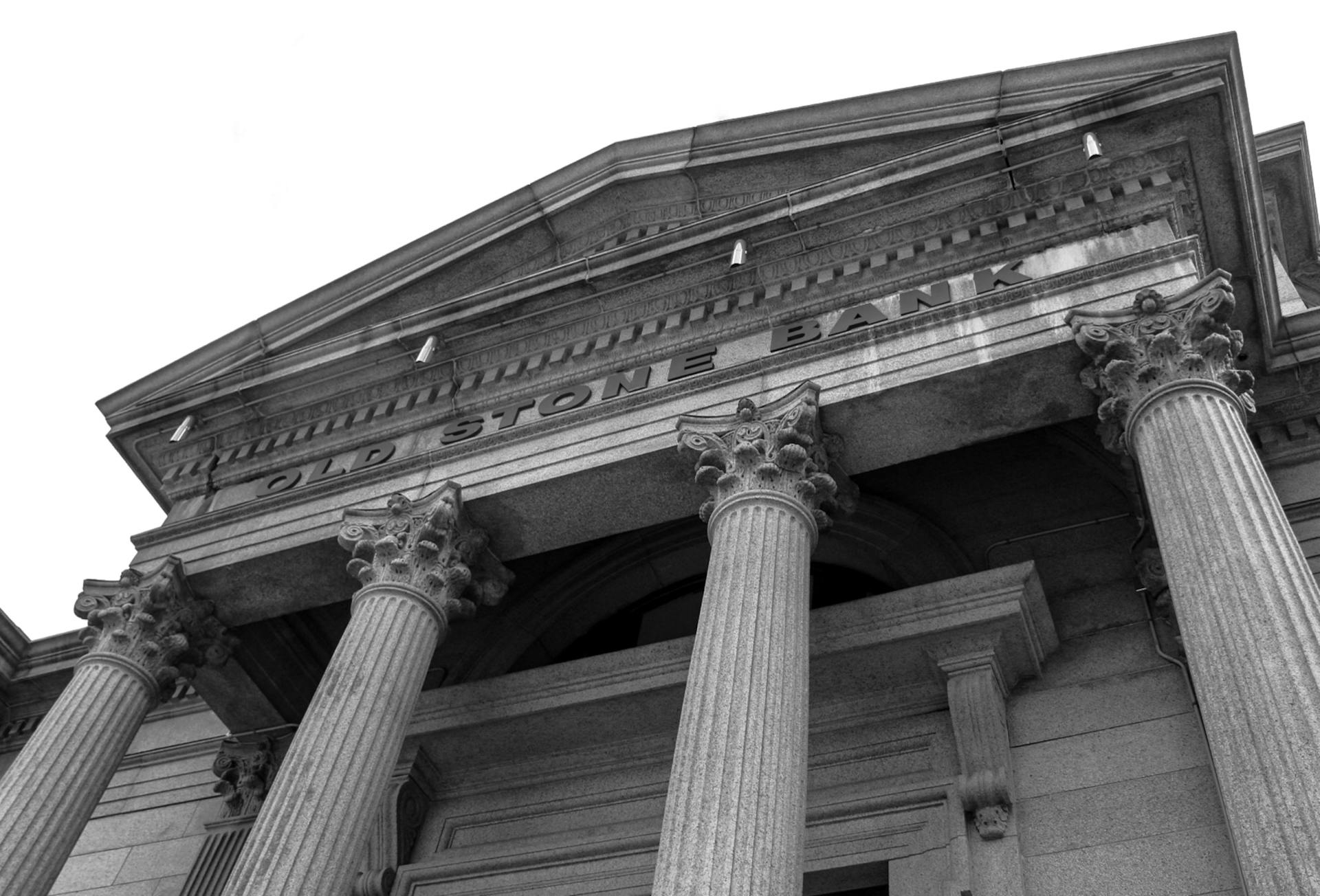
Lehman Bros, one of the largest investment banks in the world, filed for bankruptcy in 2008, sending shockwaves through the global economy. This event marked the end of an era for the 158-year-old company.
In the early 2000s, Lehman Bros began to take on excessive debt to finance its aggressive expansion into subprime mortgage lending. This reckless strategy would ultimately lead to the firm's downfall.
The company's decision to become heavily involved in subprime mortgage lending was a significant factor in its demise. Lehman Bros had invested heavily in mortgage-backed securities, which lost value rapidly as the housing market began to collapse.
The collapse of the housing market in 2007 led to a sharp decline in the value of Lehman Bros' mortgage-backed securities, leaving the company facing a liquidity crisis.
Readers also liked: Bitcoin History Chart
Causes of the Crisis
The 2008 global financial crisis was a complex event with multiple causes, but one key factor was the role of mortgages in the crisis. Lehman Brothers, a financial powerhouse, had begun underwriting mortgages and offering mortgage-backed securities by the early 2000s.
Consider reading: Prudential Financial Stock Dividend

Many of these mortgages were subprime, meaning they had dodgy terms and low or no down payments. With little regulation, lenders competed among themselves to sell the most lucrative mortgages with minimal guidelines.
The problem was that housing prices dropped, and homeowners couldn't afford their payments or refinance their mortgages, leading to widespread defaults and foreclosures. Millions of people had their homes foreclosed, and mortgage-backed securities made up of bundled subprime loans also tanked, thrashing investors.
Lehman's acquisitions of mortgage lenders in 2003 and 2004, including BNC Mortgage and Aurora Loan Services, specialized in Alt-A loans made to borrowers without full documentation. This move seemed prescient at first, as it enabled Lehman's real estate business to surge 56% from 2004 to 2006.
Lehman reported record profits every year from 2005 to 2007, with $4.2 billion in net income on $19.3 billion in revenue in 2007. However, this success was built on shaky ground, as the firm had securitized $146 billion in mortgages in 2006, a 10% increase from 2005.
A unique perspective: History of Mortgage Banking
The Crisis Unfolds

The global economy crashed in 2008, a devastating consequence of Lehman's collapse, which was the largest corporate failure in US history.
As housing prices dropped, millions of people defaulted on their subprime mortgages, leading to widespread foreclosures and a massive loss of trust in the financial system and regulators.
This loss of trust was so severe that the then chair of the Federal Reserve, Ben Bernanke, called the financial upheavals following Lehman's failure "the worst financial crisis in global history, including the Great Depression".
See what others are reading: Lehman Brothers
What Happened?
The collapse of Lehman Brothers was a massive event, representing the largest corporate failure in US history, with its bankruptcy being around six times bigger than the largest previous failure.
This historic bankruptcy was a major blow to the financial system and regulators, causing a devastating loss of trust among the public.
The then chair of the Federal Reserve, Ben Bernanke, described the financial upheavals following Lehman's failure as "the worst financial crisis in global history, including the Great Depression."
This crisis marked a turning point in the global economy, with far-reaching consequences that would be felt for years to come.
Discover more: Austerity Measures from the 2008 Financial Crisis
Liquidity Pressures
Liquidity pressures mounted on Lehman as it struggled to sell off assets at acceptable prices. This was largely due to the uncertainty surrounding the value of mortgage-related assets.
The decline in house prices and subsequent defaults on subprime mortgages led to a sharp increase in deleveraging pressures. Lehman was forced to sell assets at discounted prices or even at losses to reduce its leverage.
The bank's liquidity situation worsened as it became unable to meet its short-term obligations or roll over its debts. This led to a reliance on short-term wholesale funding through commercial paper loans and repos.
Lehman used repos to manage its balance sheet and net leverage, hiding its true leverage ratio for financial statement reporting. This involved moving over $40 billion of assets off its balance sheet daily using repos, which were then used to finance trading positions without increasing liabilities.
The bank's liquidity issues became a major concern as it struggled to maintain its financial stability.
Recommended read: Does Canada Have Their Own Currency
Key Facts and Figures

Lehman Brothers started as a dry-goods store before branching off into commodities trading and brokerage services, and eventually becoming an investment bank.
The firm's roots in dry-goods sales may seem unrelated to its eventual downfall, but it's a reminder that even the most unlikely of beginnings can lead to significant success or failure.
Lehman Brothers filed for bankruptcy on September 15, 2008, with a staggering $639 billion in assets and $619 billion in debt.
Here are some key facts and figures from the firm's history:
- Assets at the time of bankruptcy: $639 billion
- Debt at the time of bankruptcy: $619 billion
- Year Lehman Brothers first got into mortgage-backed securities: early 2000s
Table 1: Largest US Public Company Bankruptcies
The largest US public company bankruptcies from 1980 to 2008 are a sobering reminder of the financial system's vulnerabilities. Lehman Brothers' collapse in 2008 was a significant event, despite initial assessments suggesting it wasn't a crucial institution systemically.
Lehman Brothers' bankruptcy was not deemed a major concern due to its relatively stable solvency ratios since 2003.
Table 4: Top 10 US Bankruptcies by SRISK% 2006-2008

Lehman Brothers, a 160-year-old financial institution, was the fourth largest investment bank in the United States with $639 billion of assets and $613 billion of liabilities.
Its market value was around $45 billion just before it collapsed abruptly over a weekend.
The collapse was caused by Lehman being illiquid and lacking sufficient collateral to borrow from the Fed or renew repurchase agreement contracts.
Just before filing for bankruptcy, Lehman was given investment-grade ratings by the big three independent rating agencies.
These ratings were reflected in its share price and market capitalization, which hit their highest levels ever in 2006.
Lehman's collapse was a complex event with multiple causes, rather than a single straightforward reason.
The Lehman Brothers bankruptcy was a significant event in the financial crisis of 2008.
Readers also liked: History of Investment
The Lehman Brothers Story
Lehman Brothers had humble origins, tracing its roots to a general store founded by German brothers Henry, Emanuel, and Mayer Lehman in Montgomery, Alabama, in 1844.
The brothers expanded the scope of the business into commodities trading and brokerage services, and the firm then began investment banking activities in 1899.
The company prospered over the following decades as the U.S. economy grew into an international powerhouse, but it faced plenty of challenges, including the railroad bankruptcies of the 1800s and the Great Depression.
Dubious Management Practices
Lehman Brothers' management practices were dubious, to say the least. They heavily relied on repos, which allowed them to hide their high leverage during reporting times.
This manoeuvring of risky assets and "window-dressing" of financial statements was a clever loophole in financial standards that the bank exploited. It helped them win back the confidence of investors, regulators, and rating agencies.
The market's opinion of Lehman's financial stability began to decline, as shown in Figure 3, due to the deceit and excessive use of repos. This decline was a direct result of their dubious management practices.
Lehman's default risk, measured by the spread on its credit default swaps, rose drastically around mid-2007. By September 15, 2008, this spread had hit an astonishing 1,450 basis points.
Complex Capital Structure
Lehman Brothers had a complex capital structure that contributed to its downfall. This complexity was a result of the company's expansion strategy, which involved conducting global business and offering over 3,000 different financial products worldwide.
The company's capital structure was so complex that neither bank managers nor regulators were adequately prepared to examine and assess its overall functioning and financial soundness. This lack of understanding ultimately led to the company's collapse.
The company's roots were humble, but its expansion into commodities trading, brokerage services, and eventually investment banking activities made it a global player. This rapid expansion added to the complexity of its capital structure.
The company survived many challenges over the years, including the Great Depression and two world wars. However, its headlong rush into the subprime mortgage market proved to be a disastrous step that ultimately brought the company to its knees.
The complexity of Lehman Brothers' capital structure is still a concern in the banking sector 15 years after its collapse. The company's failure was a symbol of the failure of supervision and inadequacies of regulation in financial markets.
Take a look at this: American Express Company History
Key Takeaways
Lehman Brothers started as a dry-goods store before branching out into commodities trading and brokerage services. This transformation marked a significant shift in the company's direction.
The firm's expansion into mortgage-backed securities in the early 2000s was a pivotal moment in its history. This move led to the acquisition of five mortgage lenders, which further increased its exposure to the subprime mortgage market.
Lehman Brothers faced numerous challenges, but its demise was ultimately caused by the collapse of the subprime mortgage market. The firm's share price dropped significantly as it posted multiple consecutive losses.
Here are the key events leading up to Lehman Brothers' bankruptcy:
- Lehman Brothers filed for bankruptcy on Sept. 15, 2008.
- The firm had $639 billion in assets and $619 billion in debt at the time of its bankruptcy.
Frequently Asked Questions
Did everyone get their money back from Lehman Brothers?
No, the Lehman Brothers bankruptcy did not benefit its victims, while others involved in the case, such as lawyers and consultants, profited significantly. In fact, it's been described as a "feeding frenzy" for those involved in the bankruptcy process.
Sources
- https://www.npr.org/2023/09/15/1199321274/lehman-brothers-collapse-2008-mortgages
- https://www.economicsobservatory.com/why-did-lehman-brothers-fail
- https://www.investopedia.com/articles/economics/09/lehman-brothers-collapse.asp
- https://www.marketplace.org/2018/09/10/5-things-you-need-know-about-lehman-brothers/
- https://sites.lsa.umich.edu/mje/2024/01/29/unraveling-the-lehman-brothers-catalyst-of-the-2008-financial-crisis-and-global-ramifications/
Featured Images: pexels.com


